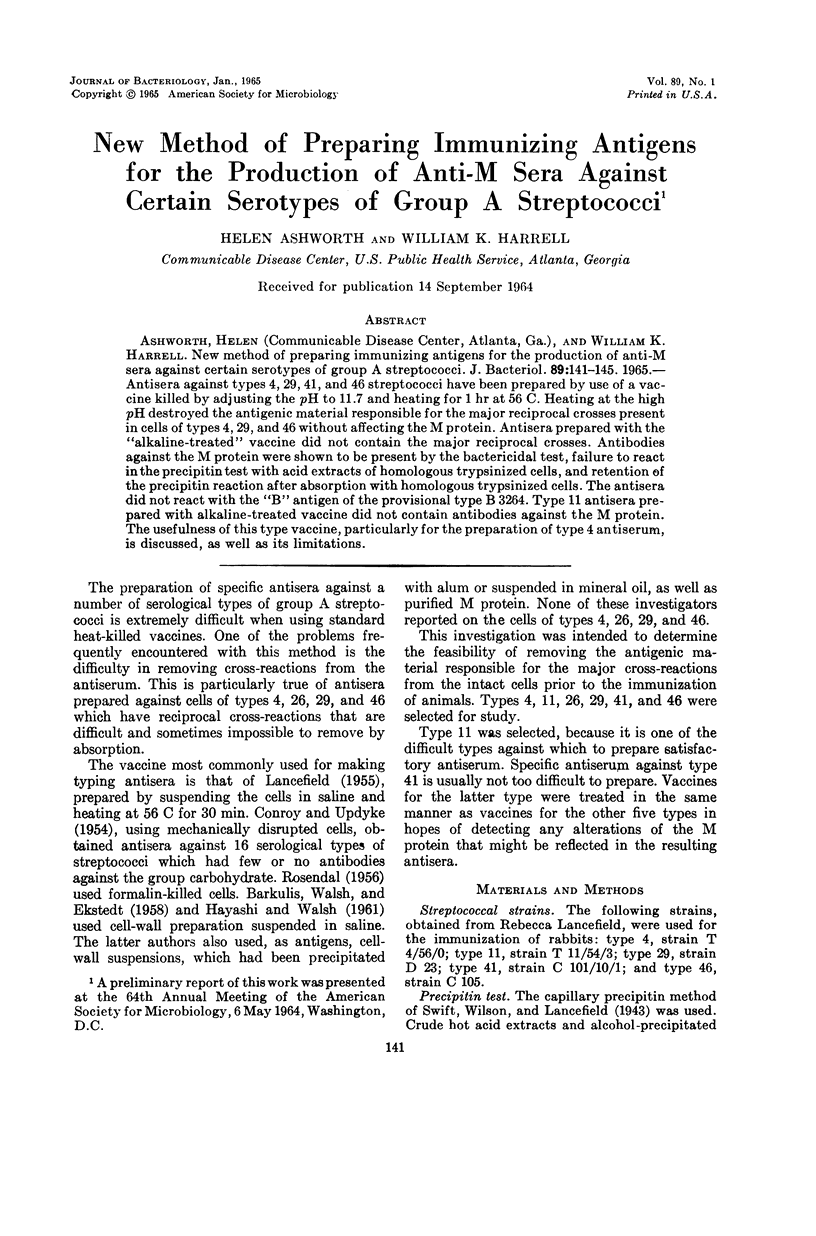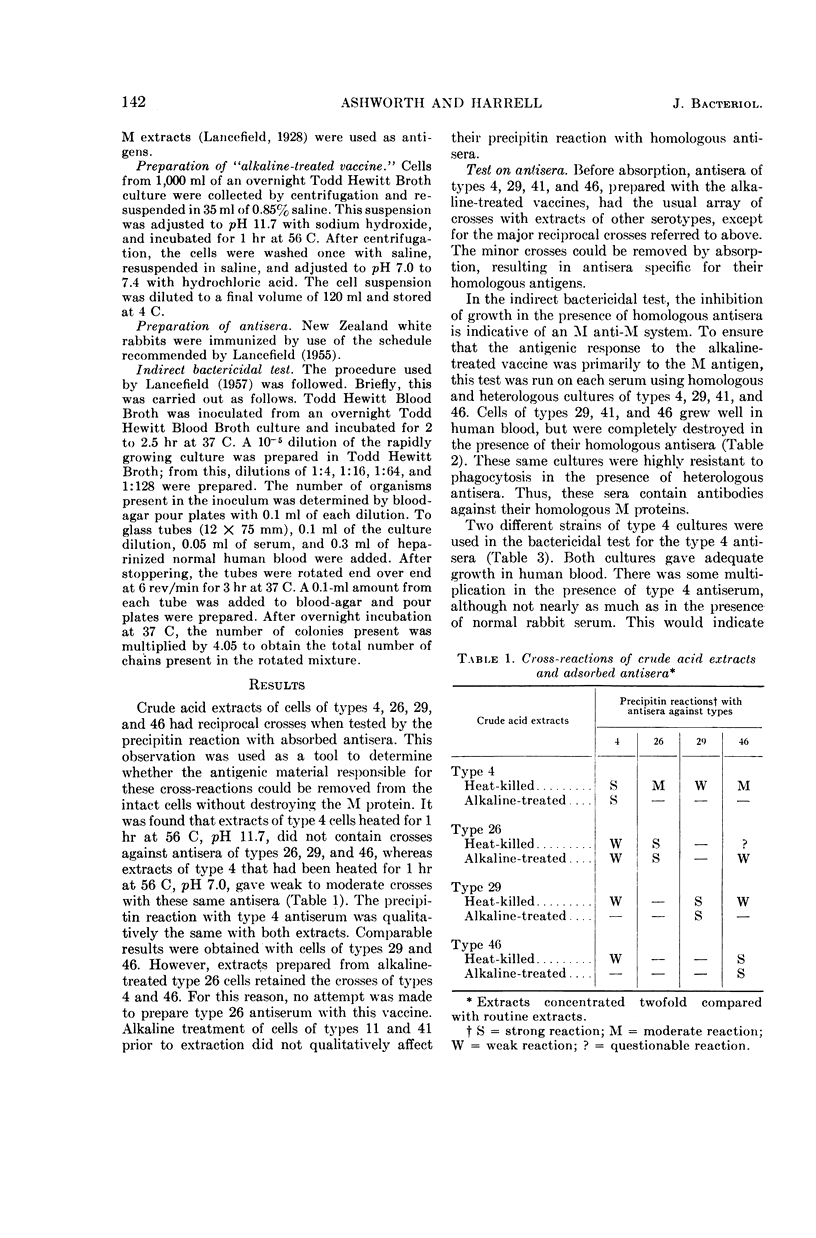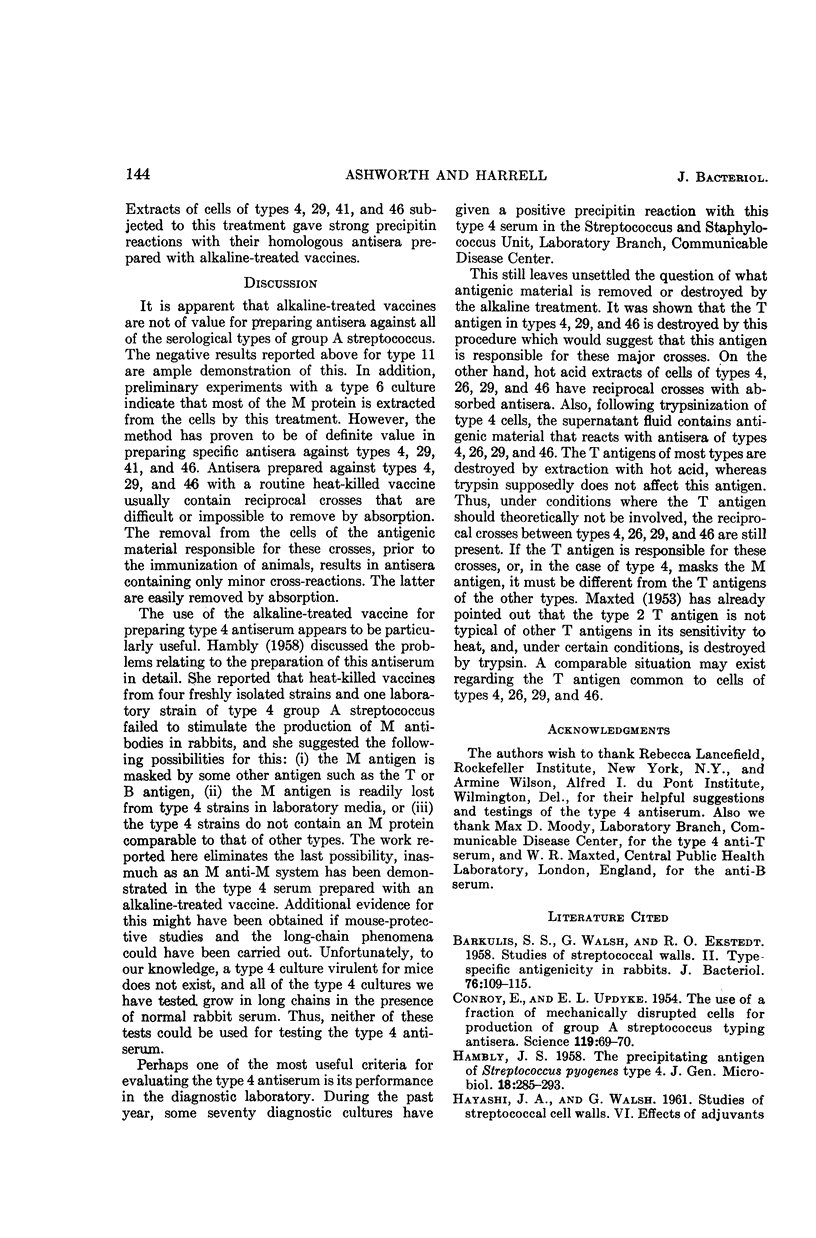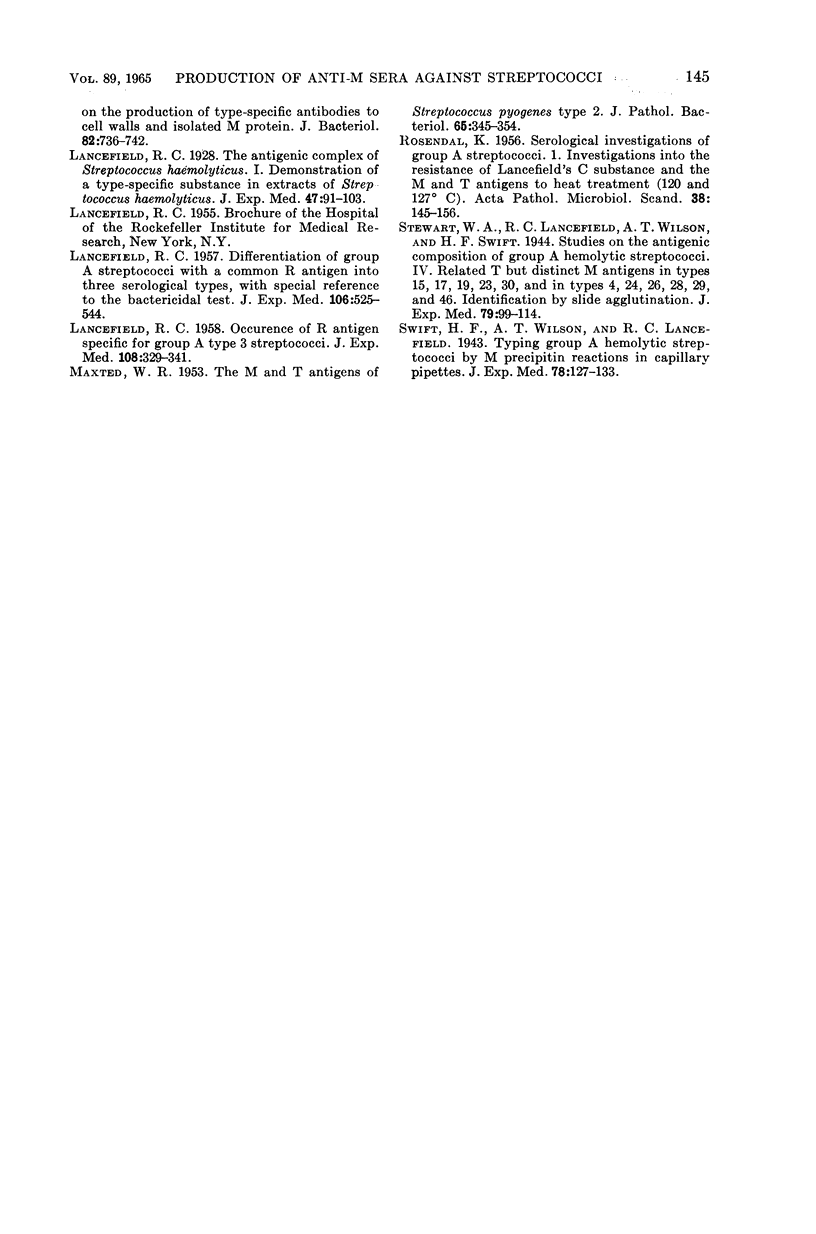Abstract
Ashworth, Helen (Communicable Disease Center, Atlanta, Ga.), and William K. Harrell. New method of preparing immunizing antigens for the production of anti-M sera against certain serotypes of group A streptococci. J. Bacteriol. 89:141–145. 1965.—Antisera against types 4, 29, 41, and 46 streptococci have been prepared by use of a vaccine killed by adjusting the pH to 11.7 and heating for 1 hr at 56 C. Heating at the high pH destroyed the antigenic material responsible for the major reciprocal crosses present in cells of types 4, 29, and 46 without affecting the M protein. Antisera prepared with the “alkaline-treated” vaccine did not contain the major reciprocal crosses. Antibodies against the M protein were shown to be present by the bactericidal test, failure to react in the precipitin test with acid extracts of homologous trypsinized cells, and retention of the precipitin reaction after absorption with homologous trypsinized cells. The antisera did not react with the “B” antigen of the provisional type B 3264. Type 11 antisera prepared with alkaline-treated vaccine did not contain antibodies against the M protein. The usefulness of this type vaccine, particularly for the preparation of type 4 antiserum, is discussed, as well as its limitations.
Full text
PDF




Selected References
These references are in PubMed. This may not be the complete list of references from this article.
- BARKULIS S. S., WALSH G., EKSTEDT R. D. Studies of streptococcal cell walls. II. Type-specific antigenicity in rabbits. J Bacteriol. 1958 Jul;76(1):109–115. doi: 10.1128/jb.76.1.109-115.1958. [DOI] [PMC free article] [PubMed] [Google Scholar]
- CONROY E., UPDYKE E. L. The use of fraction of mechanically disrupted cells for production of group A Streptococcus typing antisera. Science. 1954 Jan 8;119(3080):69–70. doi: 10.1126/science.119.3080.69. [DOI] [PubMed] [Google Scholar]
- HAMBLY J. S. The precipitating antigen of Streptococcus pyogenes type 4. J Gen Microbiol. 1958 Feb;18(1):285–293. doi: 10.1099/00221287-18-1-285. [DOI] [PubMed] [Google Scholar]
- LANCEFIELD R. C. Differentiation of group A streptococci with a common R antigen into three serological types, with special reference to the bactericidal test. J Exp Med. 1957 Oct 1;106(4):525–544. doi: 10.1084/jem.106.4.525. [DOI] [PMC free article] [PubMed] [Google Scholar]
- LANCEFIELD R. C. Occurrence of R antigen specific for Group A type 3 streptococci. J Exp Med. 1958 Sep 1;108(3):329–341. doi: 10.1084/jem.108.3.329. [DOI] [PMC free article] [PubMed] [Google Scholar]
- MAXTED W. R. The M and T antigens of Streptococcus pyogenes type 2. J Pathol Bacteriol. 1953 Apr;65(2):345–354. doi: 10.1002/path.1700650207. [DOI] [PubMed] [Google Scholar]
- ROSENDAL K. Serological investigations of group A streptococci. I. Investigation into the resistance of Lancefield's C substance and the M and T antigens to heat treatment (120 degrees and 127 degrees C). Acta Pathol Microbiol Scand. 1956;38(2):145–156. [PubMed] [Google Scholar]


